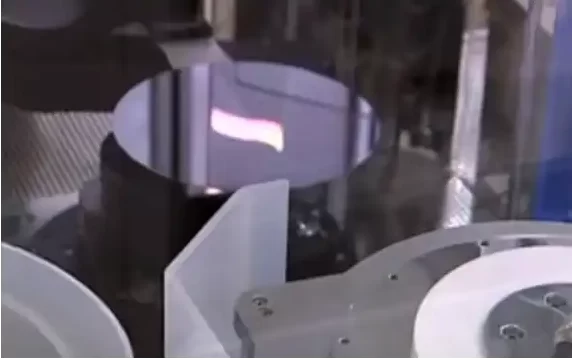
SOI/Silicon on Insulator Crystal Wafer technology uses a composite substrate: active silicon layer-insulator-bulk silicon (handle layer).
In consequence, we improve performance and reduce parasitic capacitance. The insulator can be silicon dioxide or sapphire (in the case of using sapphire technique is called SOS).
Its choice depends on the application. Therefore, we use sapphire in high-performance radio frequency (RF) and silicon dioxide in microelectronics systems.
SOI Wafer production methods
– Wafer Bonding – one of the most popular method.
- Wafer Bonding, considered one of the most popular methods, initiates the production process of Bonded SOI wafers by oxidizing donor wafers in a vertical furnace. This oxidation process results in the formation of a thermal oxide layer, which serves as the buried oxide or box layer of the final SOI wafer. Subsequently, the donor wafers undergo ion implantation using a standard batch ion implantation system. The implanted ions penetrate through the thermal oxide layer and settle in the subsurface region of the underlying donor wafer. The depth of this layer beneath the surface is determined by the implantation energy, with higher energies resulting in deeper penetration. This implanted layer forms the fracture plane that separates the top silicon and box layers from the donor wafer, facilitating transfer to the handle wafer. Consequently, the energy of the implanted ions governs the thickness of the top silicon layer.


- Following this, we carefully bring the donor and handle wafer surfaces into contact. The subsequent step involves applying a gentle compressive force at one edge of the prepared wafer.
- This initiates a bond wave that travels across the entire bod interface area bonding both wafers together.
- The bonded pair is given a treatment to further increase the bond strength.
- After that, we subject it to the mechanical cleaving process. We initiate a small fracture at the edge of the bonded pair as we are gently pulling the donor and handle wafers apart.
- The fracture jumps into the implanted layer and propagates across the entire donor wafer.
- The handle wafer with the transferred oxide and silicon layers becomes the SOI wafer.
- Following this, we have the capability to repolish and recycle the remaining donor wafer to produce additional SOI wafers. Subsequently, we subject the Cleaved SOI wafer to high temperatures to achieve a high-quality bond interface.
- After this step the SOI wafer is ready for the EPI smoothing process.
– Separation by Implantation of Oxygen (SIMOX)– technology bases on the implantation oxygen ion beams.
We transforme them into silicon dioxide in the process of annealing at an elevated temperature. It is forming the appropriate substrate.
In the Seed Method, the upper silicon layer grows directly on the insulator. To ensure sufficient layer growth, the insulator requires appropriate treatment, including chemical modification of the material.
These methods allow to achieve a wafer substrate of perfectly uniform thickness and low defect concentration.
SOI Wafer specifications
| Wafer diameter | 2”,3ʺ, 4ʺ,6ʺ,8ʺ |
| Wafer thickness | 2µm – 300µm |
| Thickness tolerance | +/- 5% |
| Surface finishing | double/single sided polishing |
| Crystal orientation | (100) (111) (110)… |
| Handle/Device Type | N-type, P-type or undoped |
| Handle resistivity | 0.001 – 10000 Ohm-cm |
| Device resistivity | 0.0025 – 150 Ohm-cm |
Small quantities or individually packed wafers are available.
If you require additional information or cannot find the specific wafer specifications you need, please feel free to contact us at info@waferexport.com. Alternatively, you can reach us toll-free in Spain at +34 622 375 955, Portugal at (+351) 800 180 183, or France at +33 805 080 082.
Read about more products we offer: Silicon Wafer, Indium Phosphide, Thermal Oxide, Glass/Quartz/Sapphire, Silicon Nitride.
